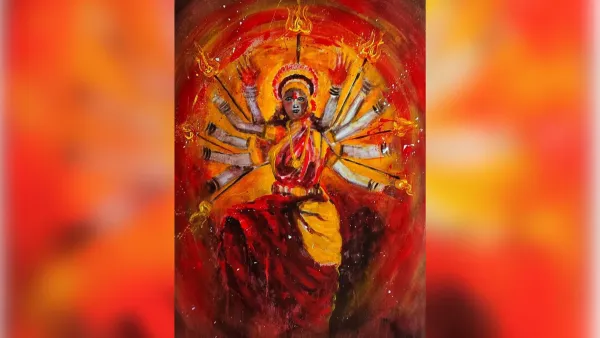
Every year, the arrival of Chaitra Navratri brings a sense of devotion and spiritual focus to millions of Hindus across India. The nine-day festival, dedicated to Goddess Durga and her nine divine forms, celebrates feminine energy as a source of strength, protection, and wisdom. Observed in the month of Chaitra according to the Hindu calendar, this Navratri is especially popular in the northern and western states of India.
In 2025, Chaitra Navratri began on Sunday, March 30, and will conclude on April 7, ending with Ram Navami, the day believed to mark the birth of Lord Ram.
Chaitra Navratri may not always carry the same public excitement as Sharad Navratri, which falls later in the year and is often celebrated with grandeur and community events. But for many families, this quieter Navratri is just as meaningful.
People mark the nine days with fasting, prayers, rituals, and deep devotion. Each day is dedicated to one form of Goddess Durga, and devotees seek her blessings for health, protection, prosperity, and spiritual guidance.
Even though Chaitra Navratri is typically less associated with dance events like garba and dandiya, this year in Surat, Gujarat, a powerful image of cultural unity and devotion took center stage.
On March 30, the first day of Chaitra Navratri and also Rajasthan Sthapna Divas, more than 11,000 women, all dressed in traditional Rajasthani attire, gathered to perform the Ghoomar dance, which is native to Rajasthan.
This display of tradition blended with devotion highlighted how the festival is still celebrated with vibrance in many regions, even if in a different tone compared to its autumn counterpart.
Many people wonder why the lively dances of garba and dandiya, which are so common during Sharad Navratri, aren’t as visible during Chaitra Navratri. There are a few popular explanations.
One reason is that Chaitra Navratri is observed more privately, often within families, and is linked to tantrik beliefs. While Sharad Navratri is filled with public festivities and peaceful spiritual practices, Chaitra Navratri leans more toward personal prosperity, wealth, and deeper rituals, some of which are less public in nature.
Secondly, the timing of the festival also influences how it is celebrated. Chaitra Navratri’s nine days are believed to represent the nine months before the birth of Lord Ram. This makes the mood more spiritual and introspective, especially as the festival ends with Ram Navami, commemorating Ram’s birth.
In contrast, Sharad Navratri ends with Dussehra, the celebration of Ram’s return from exile and the victory of good over evil. Naturally, the joyful and celebratory tone of Sharad Navratri lends itself better to public dancing and musical events.
Another reason for the difference lies in history and public influence. Some believe that Chaitra Navratri was once celebrated with as much public participation as Sharad Navratri, including dancing.
However, it was freedom fighter Lokmanya Tilak who helped bring Sharad Navratri into the public eye. Much like how he popularised Ganesh Chaturthi and Shiv Jayanti, Tilak’s efforts gave Sharad Navratri its mainstream visibility and led to large-scale community events that continue to this day.
As a result, Chaitra Navratri remained a quieter, more household affair—though it was never restricted in how it could be celebrated.
While there are no strict rules on how Chaitra Navratri must be observed, people tend to celebrate in ways that reflect their regional cultures and family traditions. Communities are free to add or adapt rituals, as long as the spirit of devotion and respect for the Goddess is preserved.
Whether it’s through a thousand women dancing in unison or a quiet prayer in front of a diya at home, Chaitra Navratri continues to bring people closer to their faith—in ways that are just as powerful, even if less loud.